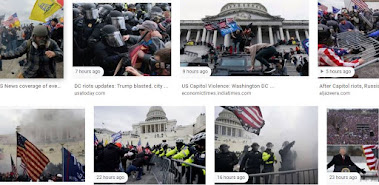Media must reject dehumanizing political language
It’s easier to marginalize or commit violence against someone if that person isn’t really human. That’s why haters deploy dehumanizing language, to make hatred seem logical and even necessary. Tutsis were called cockroaches in Rwanda in 1994; Jews called animals in Nazi Germany; and immigrants called dirty rapists and thieves in the U.S. during the last few years.
In the U.S., dehumanizing rhetoric has been fueled by political partisanship. Partisan dehumanizing rhetoric has only escalated in the wake of the January capitol attack, where some leftist media have vilified all Trump supporters as traitors, terrorists, and insurrectionists, while those on the right, particularly Fox News’ prime time hosts, continue to feed the narrative that all liberals are socialists, snowflakes, and America-haters not deserving of the freedoms inherent in ‘America The Exceptional.”
Researcher Erin Cassese writes on nbcnews.com that use of dehumanizing language is on an upswing in the U.S. ”Years ago, we noticed a rise in rhetoric characterizing a wide range of political and social groups (e.g., Muslims, immigrants) as subhuman, animals, invaders, garbage, pestilence, and monsters, among other things. Our research has shown that voters routinely rate their own party as more human than members of the opposition party, and this tendency was especially pronounced among strongly identified partisans.” (NBC News)
Further, “…Subsequent national YouGov surveys…asked partisans whether their opponents ‘lack the traits to be considered fully human - they behave like animals.’ Between 2017 and 2020, the proportion of partisans who agreed rose from around 18 percent to 35 percent.” (NBC News)
One can guess what surveys about “behaving like animals,” conducted anew after the capitol attack, might reveal.
It’s crucial now, in the wake of the capitol attack, that the press reject inflammatory, dehumanizing rhetoric, and stop conflating the actions of a few on the fringes with much larger groups. 99.9% of liberals and BLM supporters aren’t represented by the few who were violent lawbreakers last summer, just as 99.9% of Trump supporters are not violent racists who stormed the capitol.
Instead of this rhetoric, more responsible journalists, peace journalists, would report stories that can begin to bridge political divides and discuss commonalities rather than just differences. And yes, those commonalities do exist. “A growing body of research suggesting that these perceptions of difference are out of whack with people’s actual positions and beliefs. This research on “false polarization” or “meta polarization” shows conclusively that we perceive ourselves to be more polarized than we actually are… By hearing so much about our differences, we overestimate them. Eventually, our misperceptions of how polarized we are, guide how we behave. This same effect is part of the reason that conspiracy theories like QAnon take root — the more people hear them and the more people they think believe them, the more the outlandish becomes feasible.” The article cites research that shows consensus across the political spectrum on responding to Covid and about the need to address systemic racism.” (WBUR-Boston)
Better stories that emphasize our commonalities, combined with reporting that eschews inflammatory, dehumanizing language and inaccurate generalizations, would be a much-needed salve to begin the political healing process.

